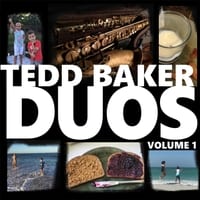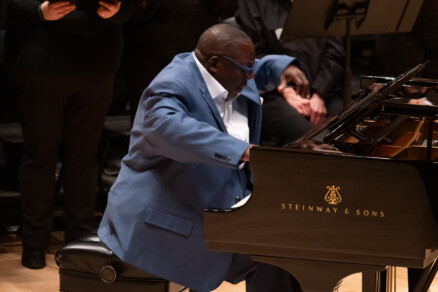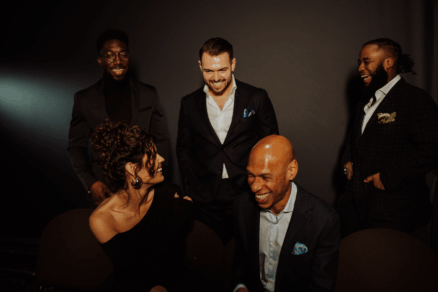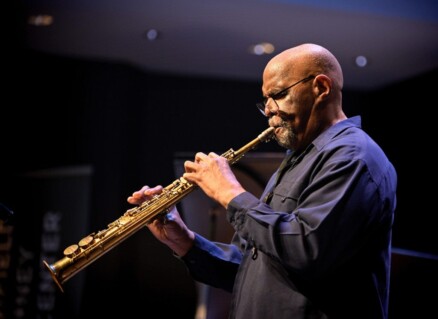The Best D.C. Jazz Albums of 2017
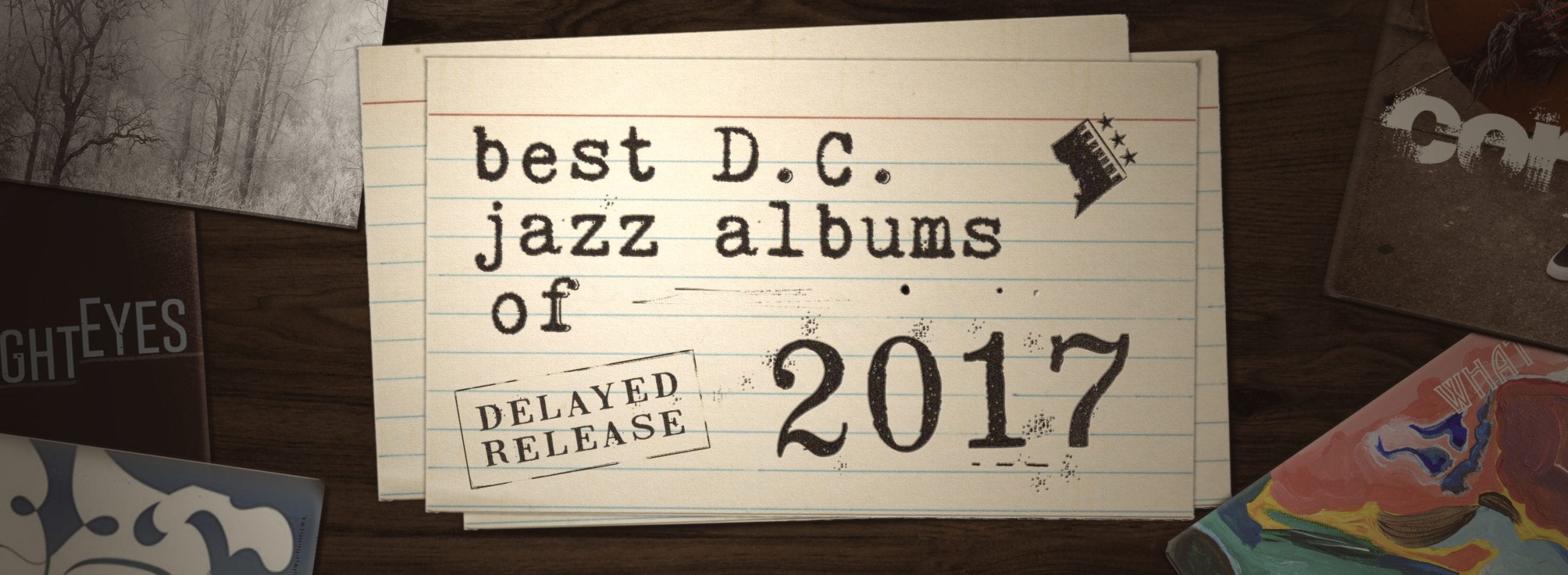
Editor’s note: Whoops.
There’s no other way to say it: Here at CapitalBop we had a lean year in 2017, with our part-time staff stretched well beyond capacity. (Thankfully, that’s changed over the past 12 months.) So in the year-end scramble, we failed to publish our annual best-albums list. It has been collecting digital dust since last December. But today, as well as publishing our Best D.C. Jazz Albums of 2018, we’re pleased to offer this belated registry of stellar 2017 albums. We hope you’ll spend some time with it. The releases below may well have slipped under your radar last year, but they’re all worth your attention. So press pause on your daily news feed, and take a moment with these fabulous albums from the vault.
On the list below, you’ll find projects that demonstrate the vast range of creativity being espoused by musicians in and around the District of Columbia. A Baltimore bassist contemplates his place within a regional jazz lineage — and amongst his present-day peers. An ensemble of prodigious, (mostly) female instrumentalists shows its fortitude and creative drive. Using an unorthodox quartet, a saxophonist offers an idiosyncratic take on the holiday-music tradition. Read on to find our belated but, we think, ever-timely list of 2017’s best D.C. jazz albums.
#5: Brad Linde, Patrick Booth, Aaron Quinn and Jonathan Taylor, Winter Tales
Traditional, easily-accessible styles of jazz are at the heart of America’s holiday music catalogue, but experimental improvised doesn’t fit so naturally into that mold. This makes Winter Tales all the bolder as an undertaking — and all the more rewarding. The project consists of nine “spontaneous compositions” by a group consisting of Brad Linde on saxophones and various other quirky sound-making things, Patrick Booth on tenor saxophone and occasional melodica, Aaron Quinn on guitar and Jonathan Taylor on drums and percussion.
The album’s tracks are united by their hibernal titles: “Chimney Sweeps,” “House Top,” “Snowlet” and so on. Some are more explicitly holiday-themed than others: “A Visit from Saint Nicholas” and “Carol of the Drum” actually feature Linde (a D.C. stalwart best known for his stewardship of the Bohemian Caverns Jazz Orchestra) reciting classic holiday poetry over his fellow musicians’ improvisations — a choice that, while seemingly tongue-and-cheek and satirical, is supported with full commitment by the ensemble. On those two tunes, the band’s instrumental musings take the form of what a Western classical listener might term a tone poem, or a “programmatic” work: a close tracing of a text-based narrative through corresponding musical gestures. (When the poem mentions reindeer hooves, a faint clopping arises from the drum kit.) The live-recording-session format that the quartet used facilitates a sort of musical-playground approach; Linde and company traded ideas in real time, producing a musical journey that is raw, engaging and genuine.
But what stands out most about Winter Tales is the quiet power of its most delicate tracks: “Huddle,” “House Top” and “Snowlet.” These dry, minimalist affairs evoke an expanse of leafless trees and blanketed snow. In this landscape, a single gust of wind demands greater attention than it would in a bustling summertime environment. In a similar way, the listener here can follow an evolving idea as it is passed from Booth to Quinn to Linde, then back again, hearing it grow and expand. The band’s tight cohesion sustains this delicate balance: Its members’ ears are wide open, moment to moment, and collective investment in the group’s sound takes precedence over any individual’s voice. Taylor is especially skilled in this respect, helping the group cohere by gracefully walking the delicate line between groove and free improvisation.
Winter Tales’ tracks are slow to develop, approaching climaxes minutes in — a choice that stands in stark relief to Linde’s other, more effusive 2017 release, Gumshoe. When they do hit a high point, these pieces grow forcefully ecstatic, bursting with a range of emotions. Maybe it’s excessive to compare those moments to a blazing fire on a cold December evening, but somehow Winter Tales takes well to such sentimentality. It allows an active listener’s imagination to run free in a quirky musical setting, where nostalgic tropes coexist — maybe even coalesce — with the restless urgency of free improvisation.
#4: Danielle Wertz & Tal Cohen, Intertwined
The best duets find their strength in a genuine connection between artists. That’s certainly the case on Intertwined. Vocalist Danielle Wertz and pianist Tal Cohen’s years playing together have allowed them to create a musical space of intimacy and honesty: The album is closer to a conversation between friends than an elaborately produced record.
Unlike many albums composed largely of jazz standards, Intertwined has a musical personality all its own, characterized by the tempered melancholy that Wertz and Cohen bring to these classic tunes. The first minute of the opening track, an arrangement of “Beautiful Love,” sets the tone for the rest of the album: Cohen’s sparse, often pointillist accompaniment is notable without being overly complicated. He dances an eerily beautiful step in and around the delicate lines of guest saxophonist Jamie Oehler. Throughout Intertwined, Cohen says only what needs to be said, presenting simple and deliberate musical ideas that pull the listener in, and heighten your attunement to Wertz’s smoky voice. His handling of each standard is never what even the most seasoned jazz listener would expect.
Above all, Intertwined’s treatment of standards is made special by its creative approach to tonal color and mood — like reproducing classic works of art with a entirely personal palette of colors. The delicacy of the duet setting, and Cohen’s sensitivity, brings every textural nuance of Wertz’s voice into stark relief. Her melodic peaks crackle with the warmth of a muted trumpet, and softer passages are so transparent that you can hear the contour of the narrator’s thoughts in real time: Listening to “Manhattan in the Rain,” I could swear I heard her smiling.
#3: Victor Provost, Bright Eyes
It’s safe to say that Victor Provost is the most remarkable steel pan player in jazz today. But there’s not a lot of competition for the title. Beyond being the rare musician to master the art of jazz steel pan, Provost has proven himself to be an endlessly provocative improviser. His melodies are as immediately memorable as they are syncopated and multidirectional. He’s playing an instrument with a high risk of novelty appeal, and a bright, rather un-malleable sound, but he makes every line feel humane.
Provost’s improvisational language is post-bop, but his foundation is distinctly Caribbean; on Bright Eyes, his sophomore release and his first for the well-reputed Sunnyside Records, he digs deeply into the steel pan’s provenance, while treating the instrument as a vehicle for contemporary expression.
Provost’s sanguine sound sets the tone and pacing for ensemble of young virtuosos: pianist Alex Brown, bassist Zach Brown and drummer Billy Williams. Across the album’s 11 Provost originals, the group winnows out trenchant grooves, but moves swiftly and effortlessly over them. In some ways, the pristinely recorded Bright Eyes hews to the common aesthetic of so much contemporary jazz. But it ranges widely — from the title track’s sunny harmonies and straight-feel churn to the son montuno-meets-calypso of “Homenaje,” featuring the alto saxophonist and National Endowment for the Arts Jazz Master Paquito D’Rivera.
Even on lower-lit tunes, such as the medium-tempo “Twenty,” Provost glides as he guides, his soloing creating a shimmering lacework. The group’s interplay can be gently percussive (in the opening bars of the melody) or fluid and twirling; Paulo Stagnaro adds depth with a low patter of percussion. Later in the album, “Song for Chelle” nudges the tempo up a bit but follows a similar formula: of buoyancy and flow and sly force.
#2: Shannon Gunn, What It Takes
What It Takes is a memorable and poignant offering from one of D.C.’s leading trombonists. With her all-women jazz orchestra, the Bullettes, Shannon Gunn has delighted audiences across the D.C. metro area — and beyond — for years. On What It Takes, she is joined by a smaller cast of collaborators as she presents a collection of mostly original tunes, ranging from reggae-influenced, laid-back groovers to upbeat, Broadway-esque and melodious tunes. These seven tracks showcase Gunn and her bandmates’ versatility, strength and chemistry.
The album’s title track is a cheerful composition showcasing Gunn’s distinctive, rich tone on the trombone; Savannah Harris’s urgent drums’ and alto saxophonist Sarah Hughes’s low-lit, spirited voice as a soloist. “Aardvark” puts the listener in mind of a cinematic car chase, with Miki Yamanaka’s organ at the wheel. On this track Harris provides a strong foundation as Gunn and Hughes state the pointed melody in duet. The two horn players deliver delightful and colorful solos, keeping the momentum high.
Elsewhere, the band steers its way toward more luscious tones. On “Nigeria,” bassist Karine Chapdelaine’s opening solo is thoughtful and haunting: Echoes of her unaccompanied bass follow each strum, like a seductive shadow. Harris soon enters, slowly and subtly, on the ride cymbal. Gunn and Hughes are close behind, stating a lulling melody over Yamanaka’s piano, and the mood turns almost playful.
The album finishes with “In Walked Allyn,” a piece with a sing-song melody and a section of reggae-styled rhythms. With Gunn taking the lead over Justin Taylor’s magnetic organ and Allen Jones’s crisp drums, the tune closes the album on a jubilant note.
#1: Kris Funn & CornerStore, CornerStore
Like any good neighborhood bodega, bassist Kris Funn’s CornerStore somehow seems to offer everything you might need. On the self-titled debut album of Funn’s trio, the Baltimore-born bassist is joined by guitarist John Lee and drummers John Lamkin and Quincy Phillips (the drummers appear on different tracks, not together). Funn turns composition into autobiography, and improvisation into recollection.
The addition of saxophonist Tim Green, an occasional guest on CornerStore gigs, helps balance out the sonic stamp of the core trio, notably on the meditative “Gemini.” While the guitar-drum-bass combo can lend itself to dizzying displays of dexterity, the heaviness of the three instruments’ sounds often weighs down the otherwise free-flowing melodies of Funn’s compositions — and of Lee’s solos.
Still, the darker and weightier aesthetic of the trio does allow for some of the richest moments of interplay and storytelling on the 11-track album. You can hear the anxiety and edginess of a young boy and his city community in the dizzying “Ghettobird,” or feel the brain-rattling pulse of a neighbor’s sound system on “Boombox.” Gritty blues, fluid jazz improvising and percussive hip-hop all intertwine.
Funn leads us through those corridors of memory — sometimes heavy and dark, sometimes happy and bright — in achieving the true mission of the CornerStore: to provide a light at the end of the tunnel. In this pursuit, the group gets help from pianists Janelle Gill (on two tracks) and Allyn Johnson (on one). The foot-stomping, holy-rolling “Thursday Night Prayer Meeting,” which features Johnson, stands out as the most radiant track on the album. Joy, doubt, fear and love coalesce into a statement of sheer human determination and beauty.
On Cornerstore‘s opening track, “Welcome,” vocalist Paige Hernandez assures us, “There’s always hope in a system that’s broke.” Kris Funn and CornerStore embody that hope, and their record is proof that it’s always present. You may only have to walk down the street to find it.
Honorable Mentions
Brad Linde’s Gumshoe, Gumshoe
On Gumshoe, the tireless Linde allows his entire band to lead. This quartet, composed of like-minded alumni of the 2013 Banff International Workshop, works in true creative tandem, building disparate tonal threads into an irresistible cacophony.
Jo-Go Project, One For Pops
Tenor saxophonist Elijah Jamal Balbed leads the Jo-Go Project, an outfit that unites D.C.’s musical past and present with a bumping, grooving and hard-hitting mix of jazz, go-go and hip-hop (among plenty of other, subtler influences). Dedicated to Chuck Brown, the Godfather of Go-go, One for Pops gives a taste of the joyful approach to music-making in which Balbed was immersed during his two years as Brown’s saxophonist.
Tedd Baker & Friends, Duos Vol. 1
Tedd Baker’s duos project finds the talented, bop-oriented saxophonist in a series of musical dances with some all-star colleagues on the D.C. jazz scene, such as bassist Kris Funn, guitarist Paul Pieper and pianist Todd Harrison. Sometimes Baker and his partners seem to be engaged in an unbounded exploration of tone, rhythm and harmony. Elsewhere, the group hews more closely to the simple accompanist-soloist dynamic, and the results are less kinetic. Either way, the musicians’ stellar chops are never in question.
Editor’s note: Votes in this poll were cast by Majeedah Johnson, Giovanni Russonello, Jamie Sandel, Jackson Sinnenberg and Luke Stewart. Each member’s best-of ballot counted equally.
Best of 2017, Brad Linde, Danielle Wertz, DC, DC jazz, jazz, Kris Funn, Shannon Gunn, Tal Cohen, Victor Provost, Washington


